After years of waiting, Carrara finally welcomes the first monographic exhibition on Giovanni Antonio Cybei (Carrara, 1706 - 1784), one of the greatest artists the city has produced, and who had never before been able to boast of an exhibition just for himself (with the exception of the small focus on the two busts of the Biblioteca Estense held at the end of 2019 at the Galleria Estense in Modena): a forgotten sculptor, then, and recently resurrected from oblivion thanks mainly to the studies of Andrea Fusani, Cybei’s top specialist, who is to be credited with having once again aroused critical attention around a sculptor who was among the most sought-after in the European courts of the 18th century. The exhibition Giovanni Antonio Cybei e il suo tempo, curated by Gerardo De Simone and Luciano Massari, assisted by a scientific committee that includes many experts in seventeenth- and eighteenth-century sculpture (including Fusani himself), is also the result of this valuable process of rediscovery, which has restored the artist’s greatness.
A troubled exhibition, however, which was supposed to close the celebrations for the 250th anniversary of the founding of the Academy of Fine Arts of Carrara (Cybei was the institute’s first director), but which found itself in the middle of the Covid blizzard and had to be postponed for many months. And divided over four venues, one of which, the CARMI - Museo Carrara e Michelangelo, a bizarre object still in search of an identity of its own, seems at the moment still unsuitable to host exhibitions of such a high level as the one on Cybei, partly because of the forced coexistence with the clumsy permanent collection that intends to illustrate the link between Carrara and Michelangelo, partly because of the objective inconvenience of the venue, and partly because the premises are few and when the exhibitions begin to be more than one there is a risk of clogging: the visitor assesses, in this regard, the fine exhibition Goya Boucher Ricci Batoni and the masters of the 1700s in the cities of Cybei, which includes splendid pieces of 18th-century painting to frame the exhibition on Cybei, but suffers from seeing them sacrificed on oppressive paneling placed in the center of the rooms to create cramped corridors, since a piece of the Cybei exhibition needed to be set up in the adjoining rooms, the municipality being among the sponsoring and implementing bodies (and therefore moved by the desire to host a section in one of its facilities) but having no other suitable venue for the purpose at the moment.
If, however, there is a focus on overcoming, at least in spirit, the qualms about logistical barriers that break the exhibition over so many and too many venues, it will be possible to say that the exhibition is founded on a solid project and meets expectations, especially since it is one of the rare exhibitions of eighteenth-century sculpture (the one before Canova, of course) not in the area, but in all of Italy. The itinerary, which includes about a hundred objects including sculptures, paintings, documents, volumes, drawings and prints, including works by Cybei and works by other artists, follows a dual chronological and thematic scanning, reconstructing the biography of the sculptor from Carrara and the main strands of his art, and overlapping as the visiting itinerary progresses, and then concluding in the fourth venue with an interesting and enjoyable documentary appendix.
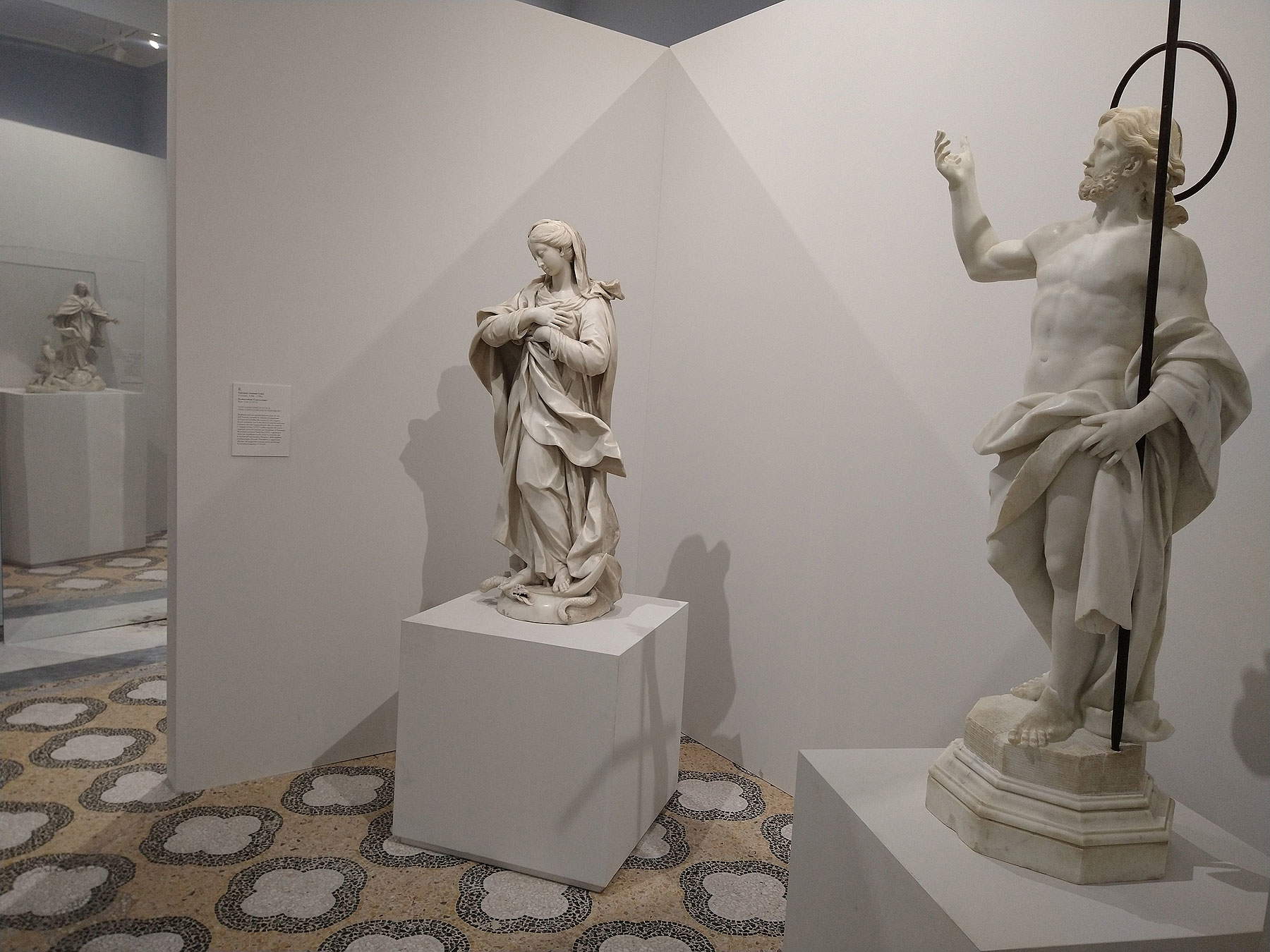

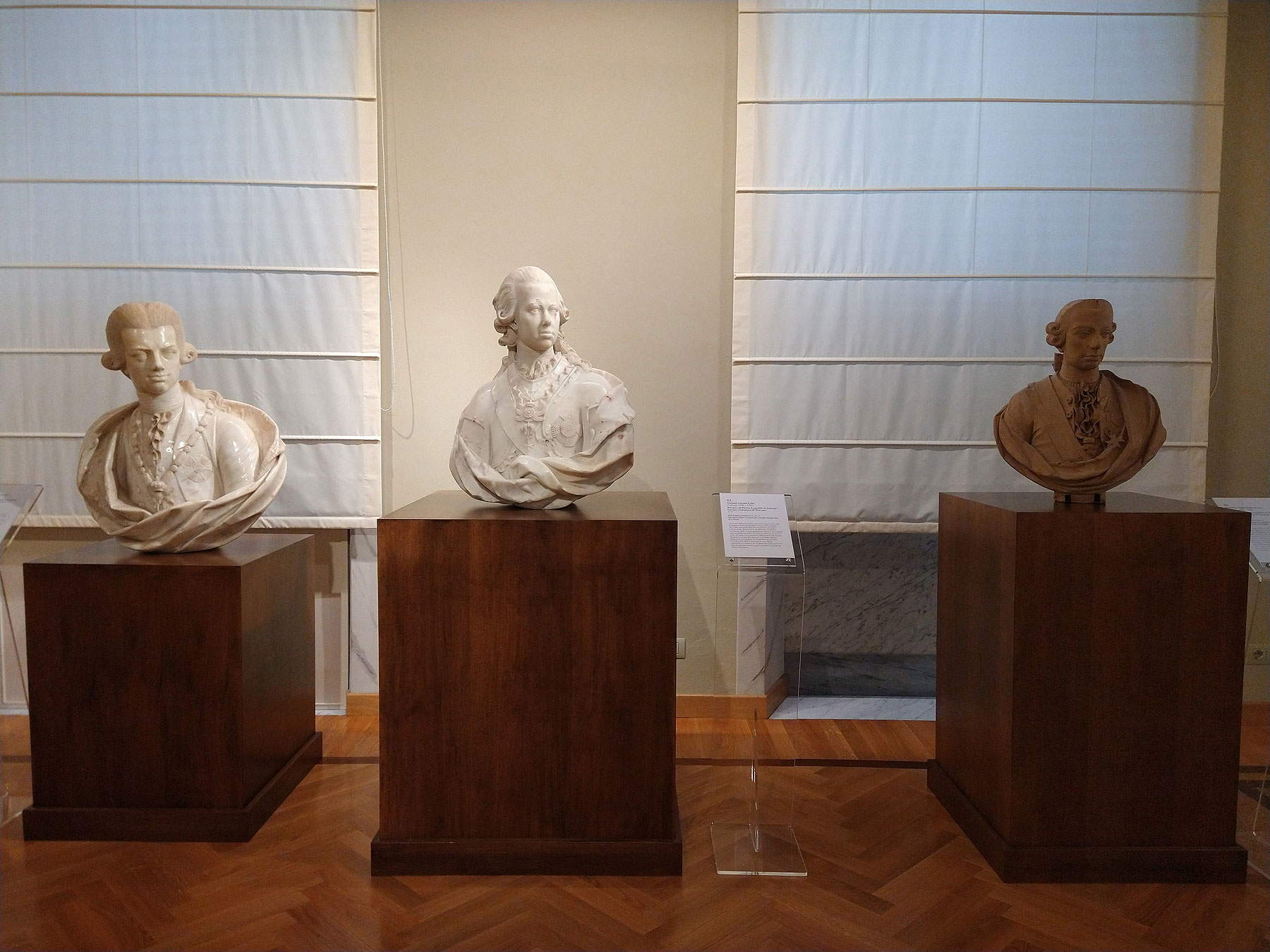
The exhibition begins with the two sections set up at CARMI: the first introduces the audience to the theme of Cybei’s education, spent under the aegis of Giovanni Baratta, one of the leading sculptors of early 18th-century Carrara (a context, moreover, evoked by a plan of the city from 1822: at the time, however, the great nineteenth-century transformations of the historic center had not yet begun, and the urban layout was not very different from that of the early eighteenth century), who kept his studio at the Baluardo, an area of the city that is still frequented by artists and marble craftsmen. The master is present with one of his most important sculptures, theHercules with the Nemean Lion, which came on loan from the Giovanni Pratesi Collection in Florence: a highly successful work that Baratta replicated for several patrons. Giovanni Baratta’s presence also takes on a very special significance because he was the first sculptor of international stature in history to keep a workshop in Carrara: a fact that might seem quite singular when one considers that Apuan marbles have continued to be quarried uninterruptedly since the 12th century (in the early medieval period quarrying came to a long halt), and that much of the marble sculpture produced from that era onward has taken shape from a block from the mountains behind the city. The fact is that Carrara never managed to develop an artistic culture of its own, and the same artists who were born in the area preferred to emigrate: with Baratta, exponent of a dynasty of sculptors (his grandfather Francesco was Bernini’s collaborator: his is the Rio della Plata in the Fountain of Rivers), Carrara saw the birth of the first European-level artist to be based in the city.
It is a witness that will be picked up by Cybei, with whom we begin to become familiar in the next section, which is thematic in nature: it is entirely devoted to the sculptor’s sacred production. It begins with one of his best-known works, the refined Immaculate Conception, begun by a thirty-five-year-old Cybei (but probably finished much later) for the private oratory of a downtown resident, Francesco Ubaldo Berrettari (today it is instead kept in the chapel of the Ospedale Civico di Carrara: a descendant of the commissioner, Marianna Berrettari, donated it to the hospital in 1876). A fundamental sculpture in Cybei’s career, it is the pinnacle of his early production, in the late Baroque style: a Virgin maiden covered in fluttering veils, swaying in all directions, related in taste affinity to the nearby Madonna of Mercy, a work by the Genoese Francesco Maria Schiaffino thirty years later, and also to a Nativity of the Virgin on canvas by Corrado Giaquinto, arriving from the Uffizi to give the visitor an account of how Cybei, during his two years in Rome (between 1750 and 1752), had worked as an apprentice in the Apulian painter’s workshop. With a leap of a couple of decades, one arrives at the St. John the Baptist of 1771, restored for the occasion: a work with a less exuberant bearing than the youthful Conception, it is an eloquent example, with its more placid and composed forms, of the late phase of Cybei’s sculpture. In between, there is the monumental Cybei, who is represented in the exhibition by the terracotta model for the two putti holding the arms of Pisa, inserted in one of the most photographed monuments in the world today: the Fountain of the Putti of Pisa, which stands opposite the Tower in Piazza dei Miracoli.
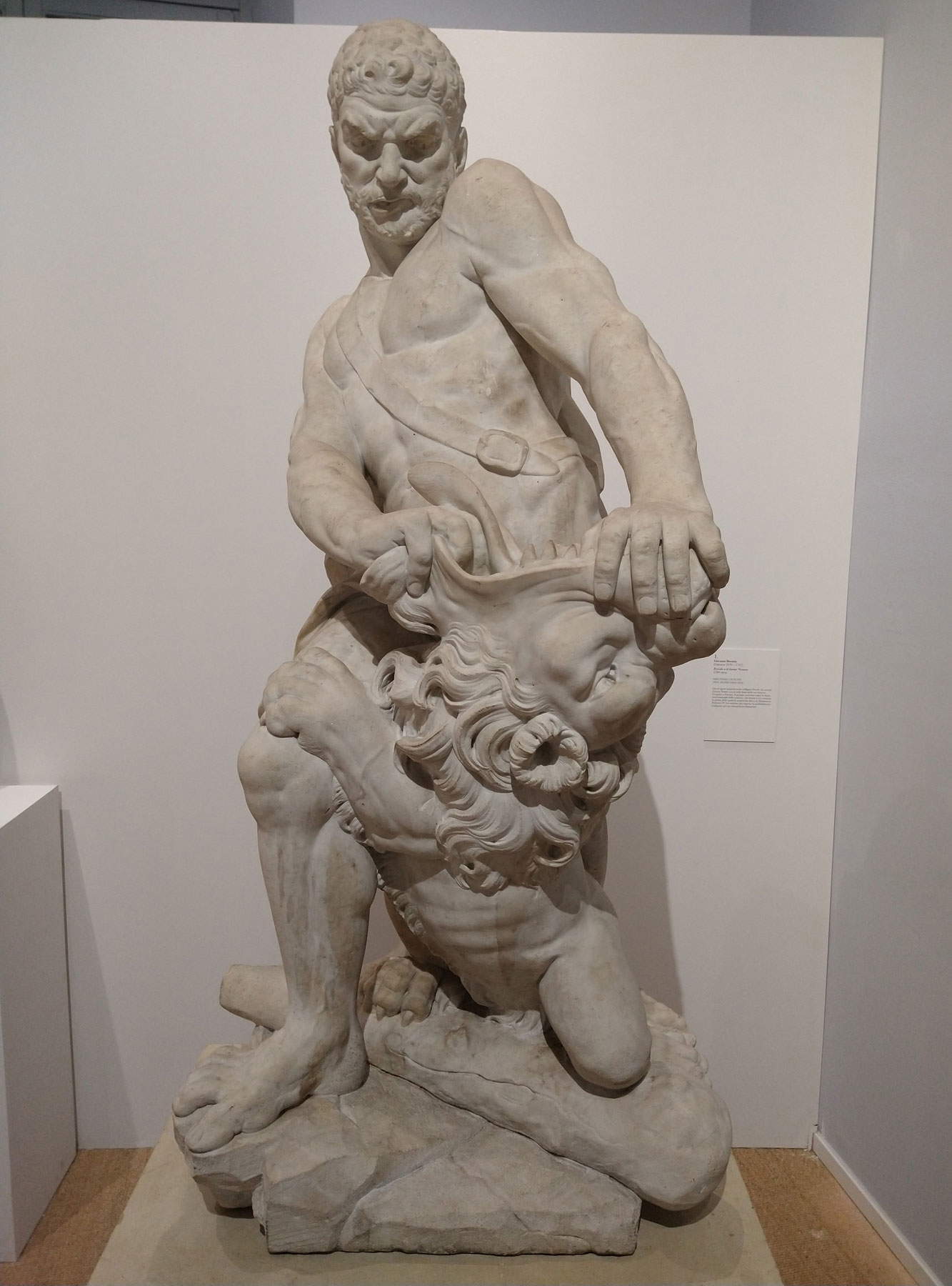
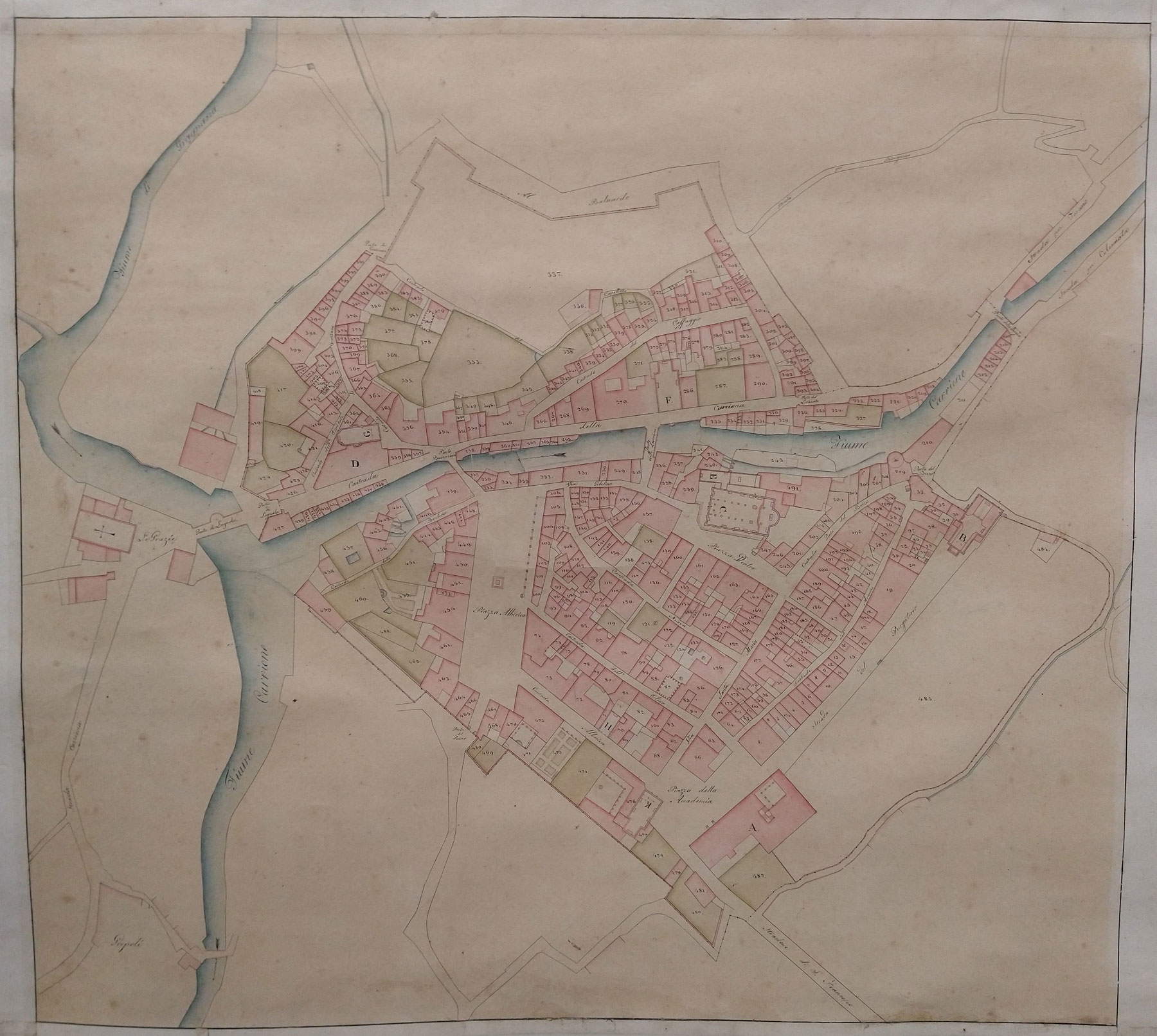
![Giovanni Antonio Cybei, Immacolata Concezione (post 1741 [1757]; scultura in marmo statuario, 123 x 36 x 30 cm; Carrara, ex Ospedale Civico, Azienda USL Toscana Nord-Ovest)
Giovanni Antonio Cybei, Immacolata Concezione (post 1741 [1757]; scultura in marmo statuario, 123 x 36 x 30 cm; Carrara, ex Ospedale Civico, Azienda USL Toscana Nord-Ovest)](https://cdn.finestresullarte.info/rivista/immagini/2021/1765/giovanni-antonio-cybei-immacolata-concezione.jpg
)
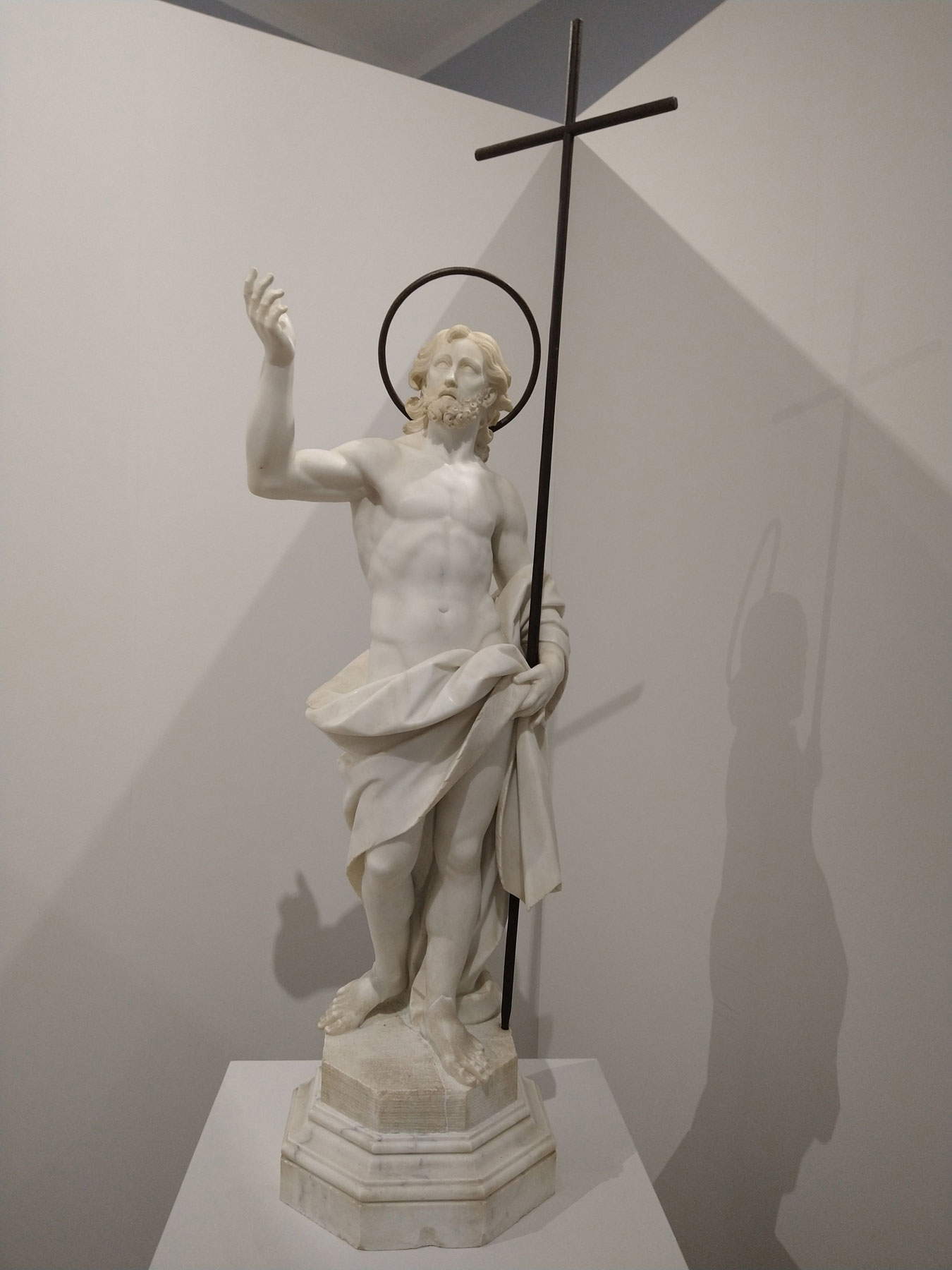
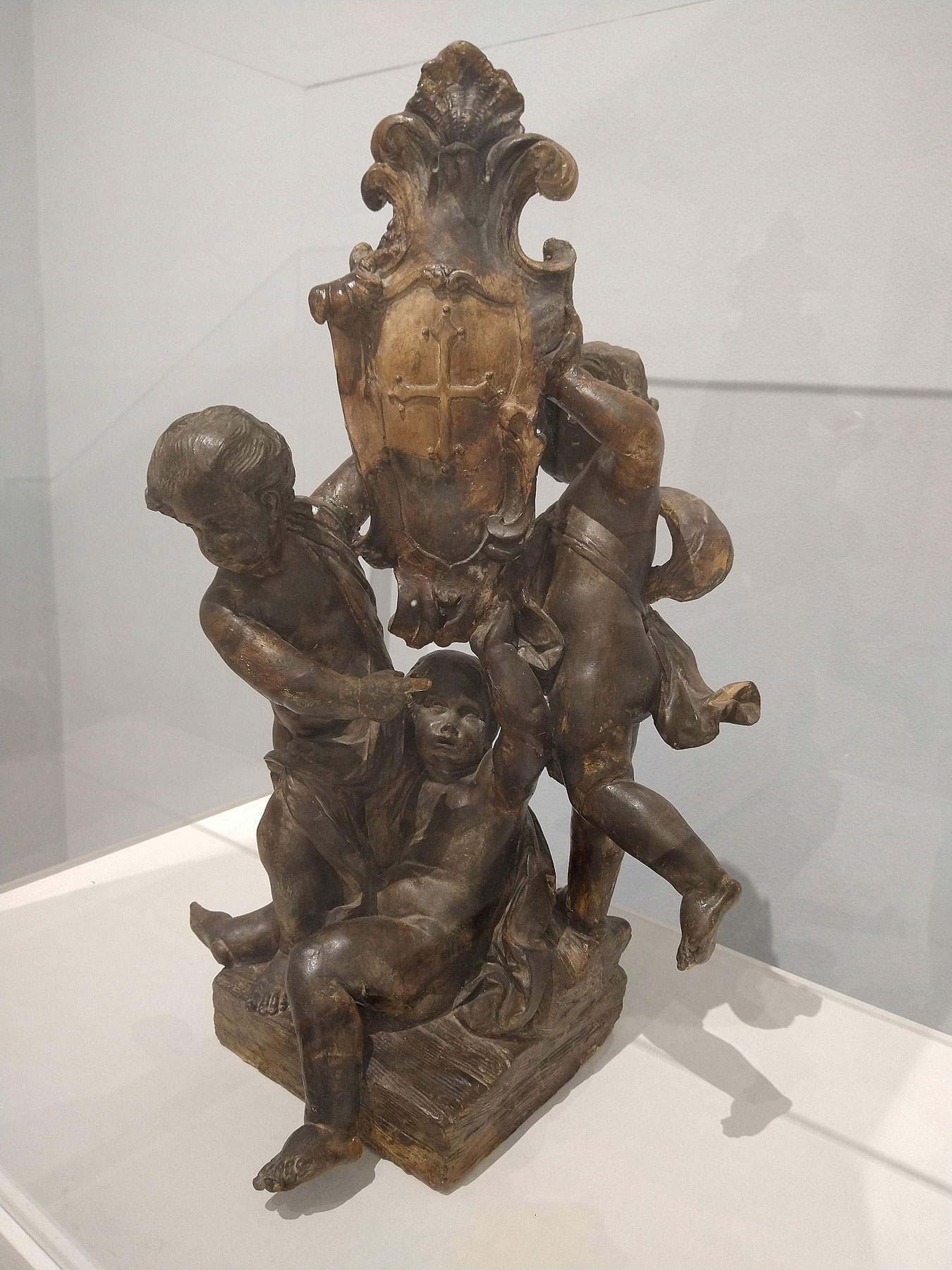
We then move to the second venue, that of Palazzo Binelli, reserved for the portraitist Cybei: the marble bust was the genre in which the Apuan artist was most prolific, and his talent is well presented to the public right from the first room, which lines up three portraits of Maria Teresa Cybo d’Este. The first is the terracotta bust executed live in Modena in the winter of 1774, perhaps the most astonishing evidence of Cybei’s mastery of portraiture, brilliant for its ability to penetrate the duchess’s expression, for the naturalness of the attitude, for the piece of virtuosity of the abundant but lightly falling folds: kept at the Academy of Fine Arts in Carrara, it is one of the best sculptures preserved in the city, though little known outside. The other two portraits flanking it are works by Pietro Stagi, a pupil of Cybei, and Roberto Micheli Pellegrini: neither is able even to approach the freshness and spontaneity of the master’s Maria Teresa. The image of Maria Teresa codified by Cybei would have considerable fortune, as attested by the medals bearing on their obverse the portrait of the sovereign of Massa and Carrara, founder of the local Academy of Fine Arts. And in order not to stray far from the ducal court, the public also has the opportunity to admire, in the same room, a singular unpublished find that emerged precisely during the organization of the exhibition: a Cybo Malaspina d’Este scepter, the result of the assemblage of elements from various workshops, on whose eighteenth-century pommel appears the coat of arms of the family that ruled the small duchy at the foot of the Apuan Alps, as well as the wheel symbol of Carrara.
Having finished the focus on Maria Theresa, the Palazzo Binelli stage reserves two more rooms for the genre of the portrait bust, also presenting some of the latest acquisitions around Cybei: thus, the portraits of Pompeo Neri and Giovanni Bonaventura Neri Badia from the Cavallini Sgarbi Collection, very fine in quality and execution (note Giovanni Bonaventura’s jabot, one of the most admirable pieces of virtuosity in all eighteenth-century sculpture), are on display side by side: the two portraits, two of the most distinguished jurists of eighteenth-century Tuscany, son and father respectively, were recently identified by Andrea Fusani on these pages and exhibited as such for the first time at the Cavallini Sgarbi Collection exhibition held at the Castello Estense in Ferrara between 2018 and 2019 (moreover, Vittorio Sgarbi considers them among the most valuable pieces in his collection). The exhibition could not miss the coeval portraits of Carlo Sigonio and Ludovico Antonio Muratori, commissioned to the artist in 1774, and capable of demonstrating how Cybei also tried his hand at the genre of the ideal portrait: to give shape to the faces of the two men of letters, the sculptor was inspired by a portrait of Lavinia Fontana for that of Sigonio, and an engraving by Angela Tormanini and Pietro Monaco for that of Muratori. This is one of the most interesting moments of the exhibition: in fact, both the final marble drafts of the two portraits and the terracotta models arrived from the Galleria e della Biblioteca Estense in Modena, so this is a rare opportunity to see them together. The exhibition also showcases additional portraits by Cybei but also evidence from his students: most notably, Michelangelo Borghi’s vivid San Valeriano, executed when the Carpi-born artist was still a student.
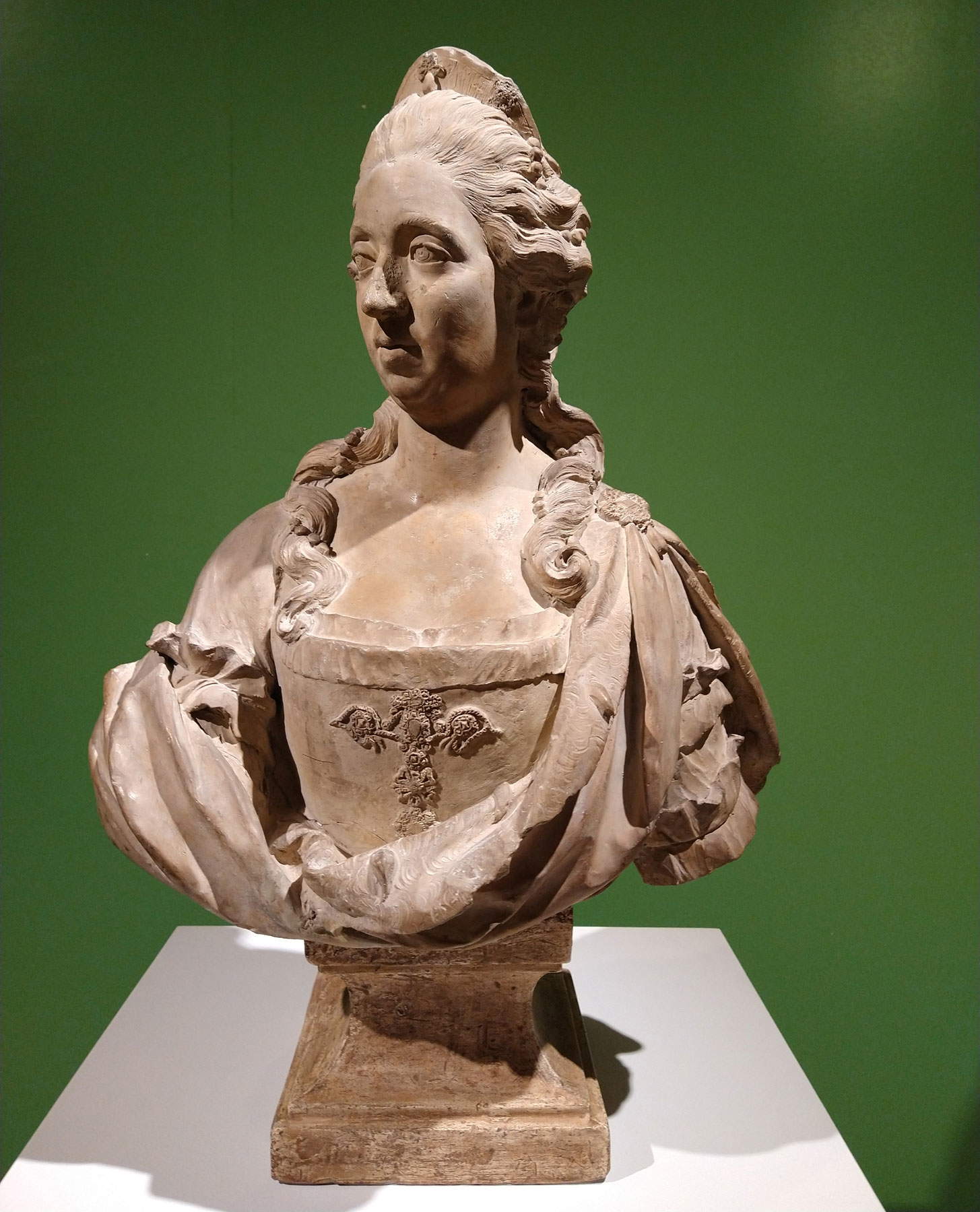
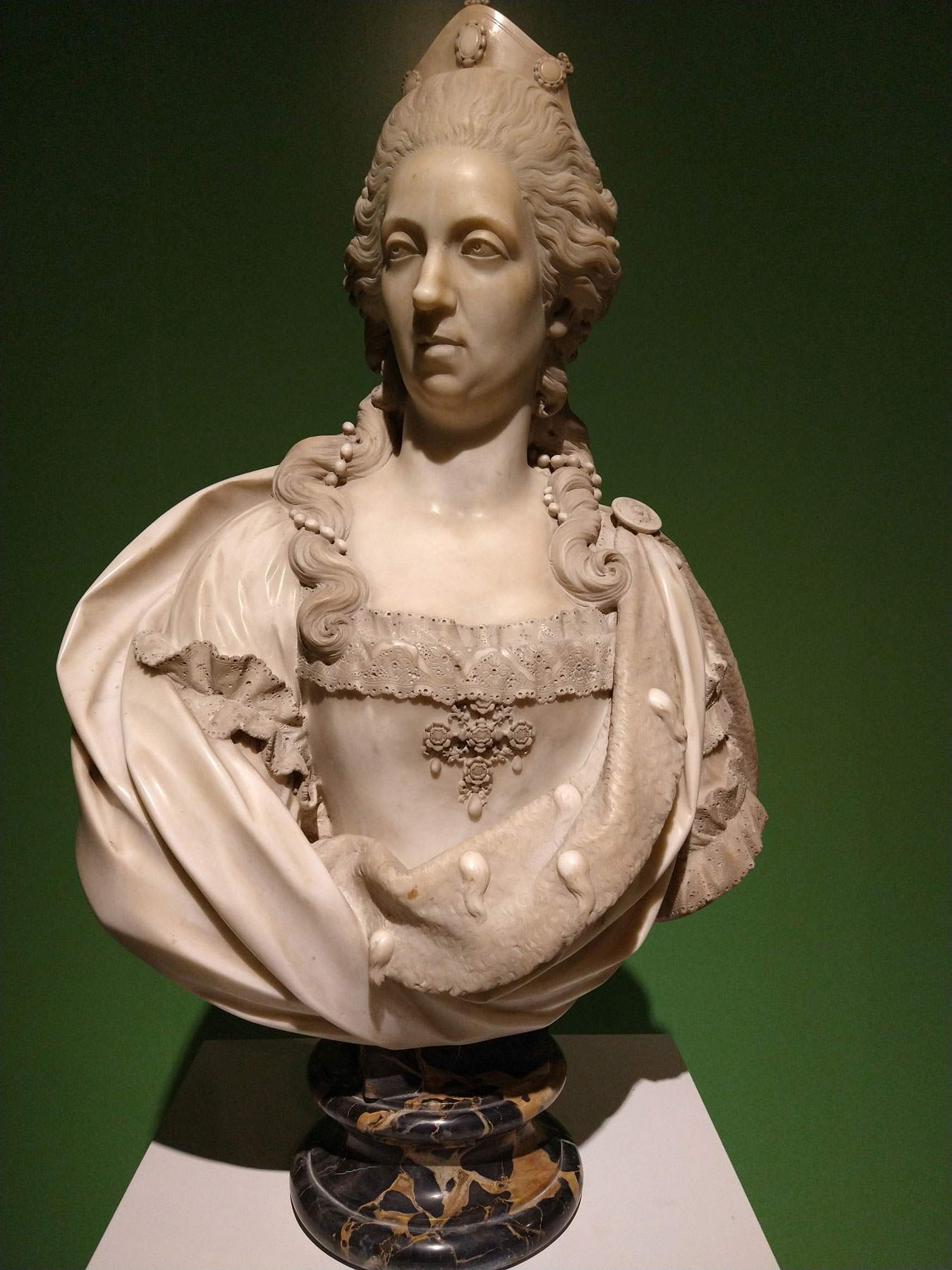
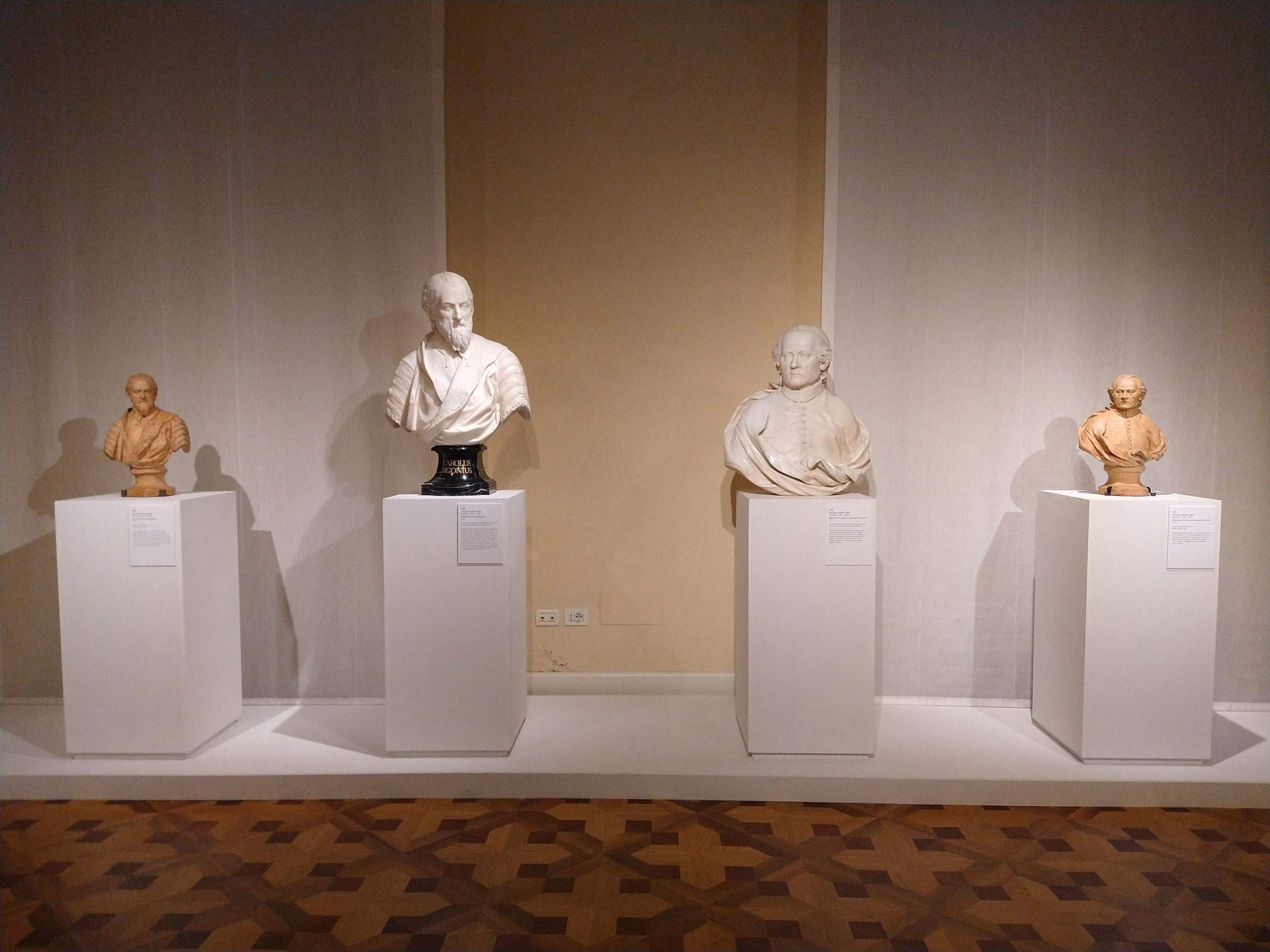




We continue along Via Verdi to arrive at the third stop, Palazzo Cucchiari, where some 30 pieces arranged in two sections reconstruct on the one hand the events of the portrait that Grand Duke Pietro Leopoldo of Lorraine commissioned from Cybei in the fall of 1769, and on the other hand the decidedly more tormented events of the equestrian monument to Francesco III d’Este, duke of Modena and Reggio. In the first section, Cybei’s only work is precisely the portrait of the grand duke of Tuscany, on loan from the Museo Nazionale di Palazzo Reale in Pisa, a work that enjoyed great appreciation and is displayed along with a theory of portraits of the sovereign, including one in plaster by the Roman Innocenzo Spinazzi, Cybei’s rival who was not, however, able to match his opponent’s success, although his portrait (the plaster is on display is a copy of the marble one in the Galleria Palatina in Palazzo Pitti) did indeed enjoy a certain amount of success. Linking up with the last section (as an appendix to the chapter on portrait busts at Palazzo Binelli) is a pair of marble busts depicting two children, recently resurfaced from a private English collection and sold by Sotheby’s in 2003 for more than 44 thousand pounds (the highest estimate was 10 thousand), for which an attribution to Cybei has been formulated: we do not know who the effigy subjects are, but on the base appear the initials (“A.C.L.” the little girl, “E.C.L.” her brother), age (she is four, he is six), date (1763) and coat of arms (bearing a serpent and a dove, referring to the famous Gospel simile, and a helmet, similar to that of English baronets, although it is more likely, given Cybei’s work history, that the two children are from the German or at least Central European area). Perhaps some heraldry enthusiast will be able to send in a possible name.
The second section of the Palazzo Cucchiari traces the history of the equestrian monument to Francesco III d’Este, commissioned from Cybei in 1772 and erected in Piazza Sant’Agostino in 1774, in front of the Ospedale degli Infermi e degli Incurabili and the Albergo dei Poveri, now the Palazzo dei Musei and home of the Galleria Estense: these were two institutions for the needy that had recently been founded by the ruler of Modena and Reggio. The equestrian statue lasted very little: it was in fact destroyed during the revolutionary uprisings in 1796. And the exhibition retraces all its stages, from conception to destruction: so we follow Cybei’s proposal (a sheet written in ink on March 30, 1772, on which the artist outlined the project), read the specifications for execution, signed by Governor Munarini, representative of the duchy, and the sculptor, see the terracotta sketch (the only existing evidence of the monument’s elaboration: it was modeled in the spring of 1772), the plaster cast preserved at the Academy of Fine Arts in Carrara (this is one of the rare works that allow us to reconstruct the destroyed monument with some accuracy). There is also no shortage of prints and paintings (such as the oil on canvas of about 1780 by Giuseppe Maria Soli) depicting the square with, at its center, the equestrian monument before its demolition: the dramatic end of the work that was meant to celebrate the duke is proven by the only surviving fragment of the statue, the right foot, lent by the Museo Civico d’Arte di Modena.
The tour ends at theAcademy of Fine Arts, in a room in which a pleasant documentary appendix has been built, which, unlike many similar sections in other exhibitions, is organized so as not to bore the public, with just a few objects, each of them useful for its purpose, namely that of reconstructing the historical, cultural, and social context in which Cybei worked. In the display cases alternate documents that reknit many threads of Carrara’s history: from the founding of the Academy of Fine Arts to books that reconstruct Carrara’s cultural environments of the time (including a rare 1782 edition of Diderot and d’Alambert’sEncyclopédie, from the Lucca edition, the first printed in Italy, and part of the Academy’s holdings since 1782), from work at the quarries and in the sculpture workshops to Cybei’s personal affairs. A letter dated August 18, 1783, sent by the sculptor to Abbot Angelo Mussi, and in which a bitter note about the city stands out: “I willingly renounce what my homeland can give me, which has been more of a stepmother than a mother to me, and from which I have received nothing but air.”

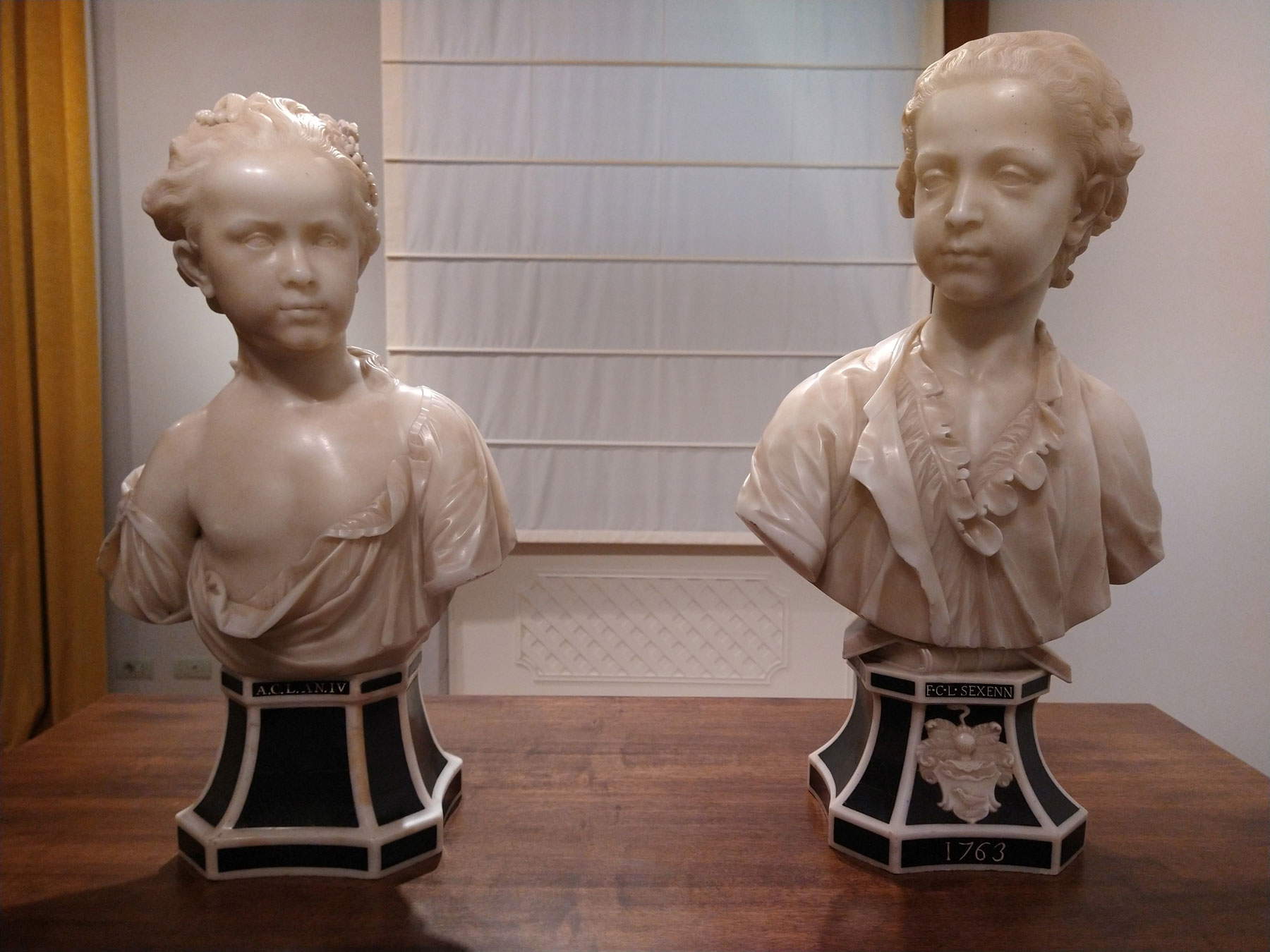

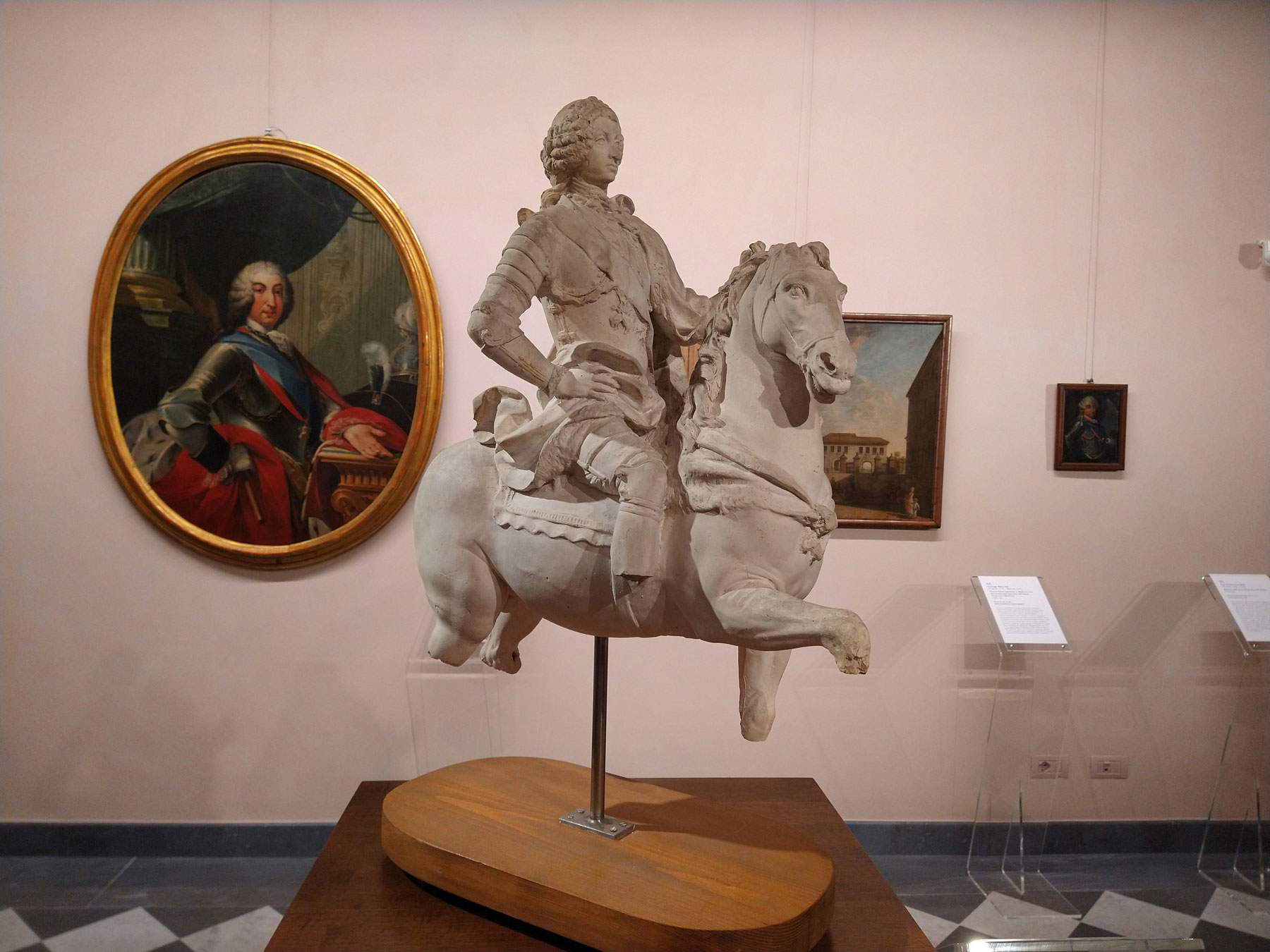
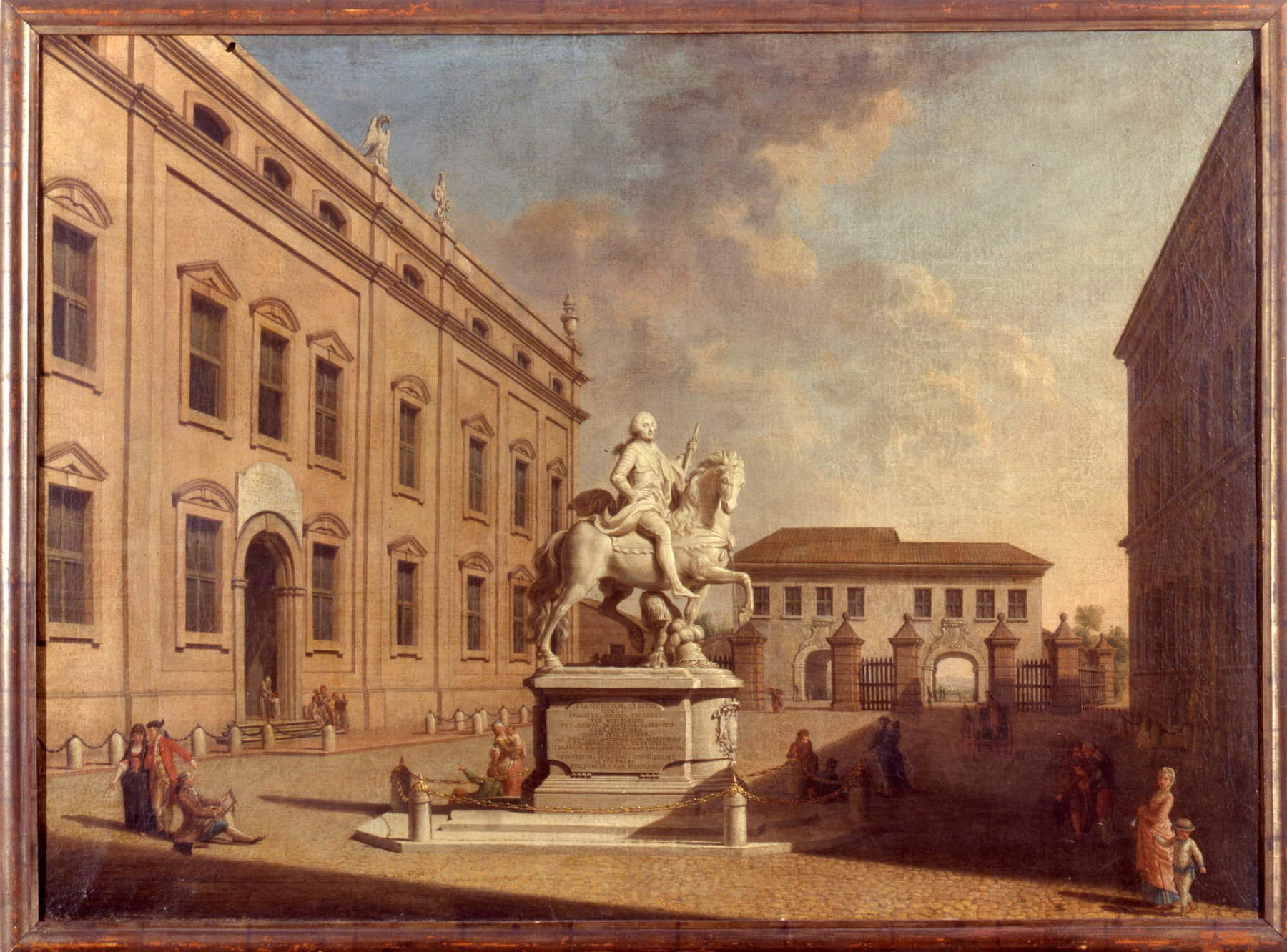
The public eager to complete their knowledge of the “valiant sculptor from Carrara,” as Gerolamo Tiraboschi, his first biographer, called him, will be able to extend the contents of Giovanni Cybei and his time by going to visit the artist’s works remaining in the area: Our Lady of the Rosary, a marvelous youthful processional machine that is located in Carrara Cathedral and was recovered in 2017 after a long and complicated restoration that redeemed it from the heavy state of decay and abandonment in which it was lying, and then the Altar of Redemption also in the Cathedral, the Saint Francis in the Church of the Saint of Assisi not far from Palazzo Cucchiari, or even the Saint Bernardine of Siena in the same house of worship. And then on to the surrounding area: to Sarzana, for example, to see the Glory of the Assumption in the Cathedral, or to the Monumental Cemetery in Pisa, where Francesco Algarotti’s funeral monument stands as a luminous work of transition between late Baroque and neoclassicism.
One of the exhibition’s plus points is that it has assembled a good deal of unpublished or difficult-to-access material to compose an itinerary that increases knowledge about the artist and lays the groundwork for further study later on: the exhibition lacks, for example, a section illustrating the European Cybei, the Cybei who worked the Prince of Prussia or for the Russian aristocracy. It is a pity that, as sometimes happens, the catalog did not come out while the exhibition was in progress: it will be ready in the fall, and there is no doubt that it will be a fundamental tool for the advancement of research on an unjustly forgotten artist, since Cybei was one of the principal and most honored sculptors who worked in 18th-century Italy, an artist who started out bound by the dictates of late Baroque taste but was able to anticipate and intuit the classical horizon that would open up at the end of the century. In the meantime, an important achievement has been acquired: the definitive redemption of Giovanni Antonio Cybei from the oblivion into which he had fallen.
Warning: the translation into English of the original Italian article was created using automatic tools. We undertake to review all articles, but we do not guarantee the total absence of inaccuracies in the translation due to the program. You can find the original by clicking on the ITA button. If you find any mistake,please contact us.